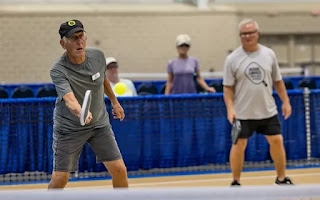How To Not Catch An Edge while Snowboarding
While wrist guards and impact shorts will make this less painful, there are ways to adapt your technique to avoid catching edge, making your learning experience a lot more enjoyable.
 |
| How To Not Catch An Edge while Snowboarding |
What does it mean to catch an edge when snowboarding?
Most of the time, edges are quite useful. They allow you to turn and slow down your snowboard, and without them, controlling your board would be nearly impossible. Your board has two edges: a heel side edge and a toe side edge, and putting the wrong edge in the snow at the wrong time will trip you up and throw you on the deck!
Why do you catch an edge?
When snowboarding, you spend the majority of your time with one edge in the snow. Whether turning or cutting across the hill, you'll be balanced on one edge, with the other edge floating above the snow, where it could catch and cause you to fall.
This risk is much lower on a steep slope because the gap between your floating edge and the snow is much larger. This gap is much smaller on a gentle slope, where most beginners will be learning, giving you less margin for error.
The direction of travel of your board is another factor that causes you to catch an edge. If your board is running straight down the hill, whether on an edge or a flat base, you have no chance of catching an edge!
When the board begins to drift sideways in a sideslip, the problem begins. When learning to snowboard, most people will begin here. When you're first learning, sideslipping allows you to keep your speed down and your turns under control. As you improve and gain more edge control, you will be able to ride faster and with a cleaner edge hold. However, there is a chance that you will gain an advantage while still learning.
How to stop catching edge
One way to avoid catching edge is to increase edge angle so that the floating edge is higher above the snow.
One thing to keep in mind is to keep the board moving across the hill between turns. If you can do this, it means the board is sliding along its length rather than sideways. In between turns, I teach people to look to the front of the board and spend less time looking straight down the slope. You'll be able to keep your turns flowing in a S shape path this way.
Catwalks/Flat tracks
The Catwalks are one of the most difficult parts of the mountain to navigate as a beginner/intermediate snowboarder. These are the narrow and flat paths that normally connect different parts of the mountain. They are marked as green on the trail map, indicating that they are the easiest trails on the mountain, but on a snowboard, they can be a nightmare!
They are difficult to ride on a snowboard because you need to maintain your speed on the flat sections while also having enough room to turn. There can be a lot of pressure and not much room to make each turn, especially when they are busy at the end of the day.
So my first piece of advice is to stay away from them! Before you try them, you'll need the following skills:
Linked mellow turns - with good technique, you should be able to link up S turns. That means putting your weight forward at the start of each turn and steering the board through the turn with your front foot.
Straight running — refers to allowing the board to run down the slope on a flat foundation. Although it is a simple technique, many people dislike it because they believe it can lead to edge catching. The key is to maintain your weight on both feet, with your knees slightly bent and your feet flat on the deck. Then just don't do anything out of the ordinary! This means you should avoid twisting your hips or doing anything else that might cause the board to react and start drifting sideways.
Speed checks — Are essential for gaining confidence on narrow tracks. Knowing how to speed check allows you to reduce speed or stop without the board traveling across the hill in a turn and getting in the way of someone else. The ability to speed check and stop will give you the confidence to run straight and gain speed on these flat, narrow sections.
All of these skills can be practiced elsewhere on the mountain, so look for a nice quiet area with an easy slope and plenty of space. There, you can alternate between turns, straight runs, and speed checks. I usually have my students do a few ollies because it's a good way to get the board running on a flat base and it's fun!
When you're ready, try doing it during a quieter time of day, when there is less traffic and less pressure on you to make your turns. In the middle of the morning, the trails to the bottom of the mountain are usually deserted.





